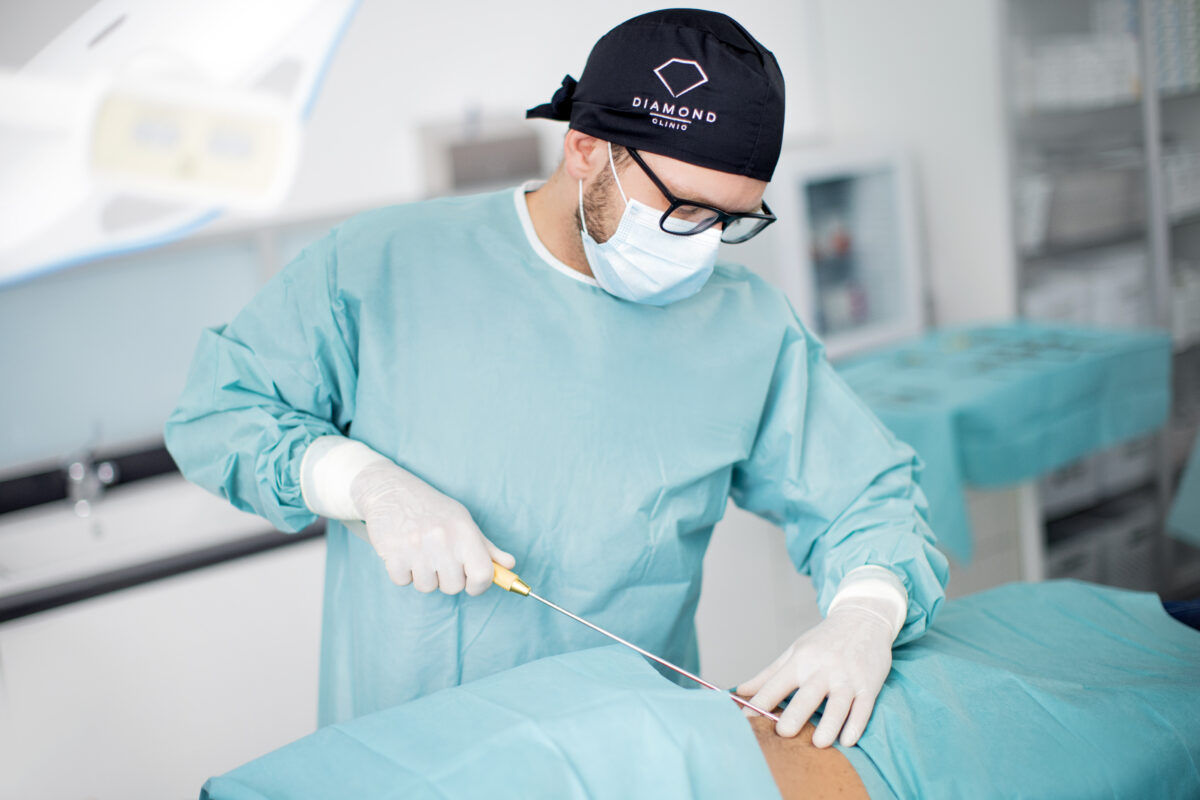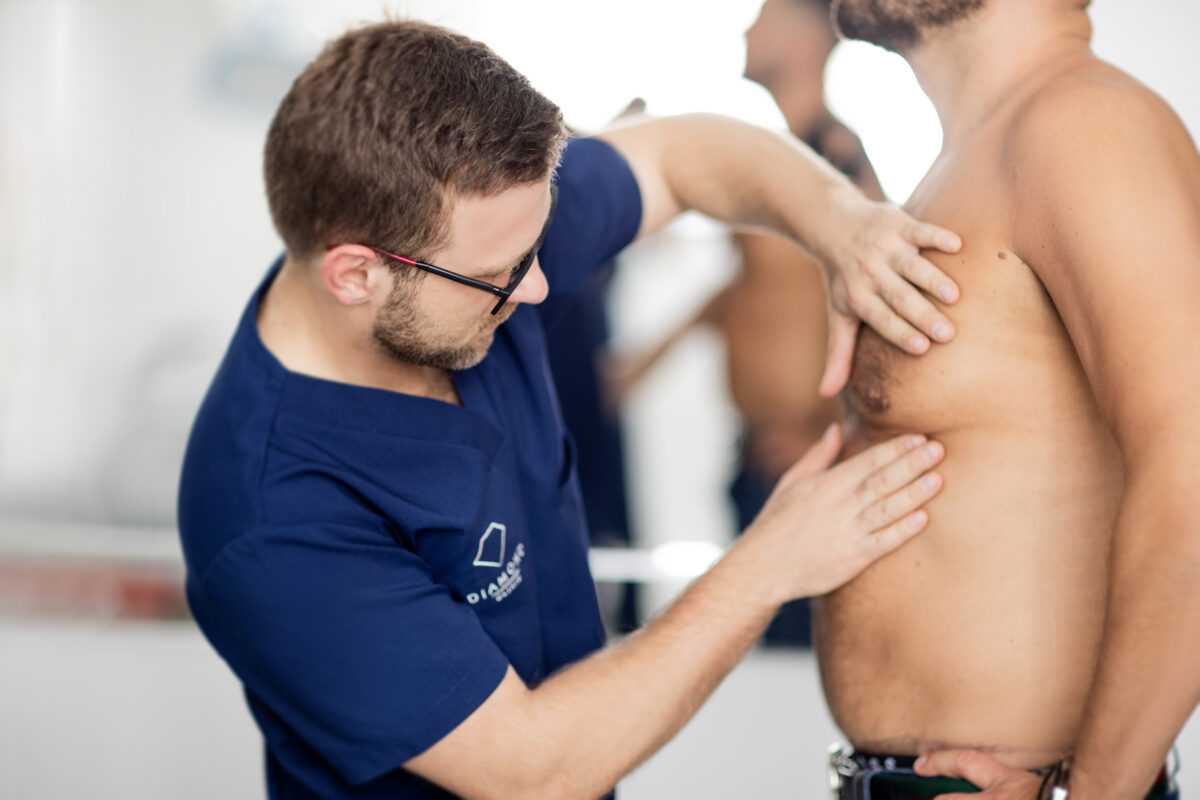Cosmetic surgery
What is Liposuction treatment?
Liposuction is one of the most commonly performed aesthetic procedures in the world. Despite the development of non-invasive techniques, it remains the gold standard in the removal of focal accumulations of subcutaneous fatty tissue. It involves body contouring by removing fat tissue from the areas where there is excess fat. It is possible to remove fat from the abdomen, ‘sides’, thighs, knee area, ankles, chin, shoulders and also breasts, e.g. in men.
Who is the Liposuction procedure for?
The primary indication for the procedure is limited fat deposits that are eligible for removal. Liposuction is a procedure that is ideal for people who are of normal weight or not very overweight and have isolated fat deposits in selected areas, who have realistic expectations of the results of the procedure. It is also a good option for patients with localised obesity (e.g. abdominal, in the lower limbs). Very often liposuction is combined with other surgical procedures, e.g. fat grafting to the breast, face, or abdominal plastic surgery.
The medical assessment is an essential part of safe liposuction and achieving the desired results. It consists of a thorough and documented medical history, a physical examination (assessment of the skin and subcutaneous fat tissue, their size and distribution) and laboratory analyses depending on the patient’s general condition and age.
Let us emphasise that liposuction is not a treatment for obesity. Without exercise and healthy eating habits, no long-term improvement can be achieved – the results of the procedure are then only temporary. Liposuction should be treated as a factor that mobilises people to change their lifestyle and accelerates the achievement of the desired effect.
What is Liposuction treatment and how long does it take?
The duration of the treatment depends on several important factors :
- the amount of fat tissue,
- the technique used,
- the size of the treatment area.
The total duration of the operation is between one and two hours. The procedure is usually performed under local anaesthesia; for more extensive liposuction or combined procedures, general anaesthesia is used. Liposuction begins with small incisions made in those areas of the body that the procedure will cover. A narrow tube, known as a cannula, is then inserted through the incisions. The surgeon manipulates the cannula, breaking up the fat cells before they are suctioned out. The incisions are then sutured (this leaves no visible scars).
What are the contraindications to liposuction surgery?
The main contraindications to liposuction surgery are:
- pregnancy and breastfeeding period;
- acute diseases of the cardiovascular system;
- disorders of the coagulation system;
- liver diseases;
- autoimmune diseases;
- certain skin diseases.
It should be noted that taking high doses of oestrogens and smoking are among the factors that increase the risk of thrombophlebitis or deep venous thrombosis (DVT) in healthy individuals.
HIV infection may be a contraindication to the procedure. Allergies and intolerances to medicines and some chemicals may also be a contraindication to the procedure.
The final qualification for the procedure is carried out by the surgeon during the consultation.
The *price of the procedure may change due to the extent and type of anaesthesia. The final cost of the procedure/operation is determined by the doctor in consultation with the patient.
Liposuction Surgery
- unwanted fatty tissue in the following areas: abdomen, waist, thighs, inner side of knees, hips, arms, back, gynecomastia, chin
- silhouette sculpting.
- hypertrophy of adipose and connective tissue, caused by proliferation of vascular malformations.
- modelling of the silhouette or selected body part
- improving contours and reducing girths
- alignment of body proportions






